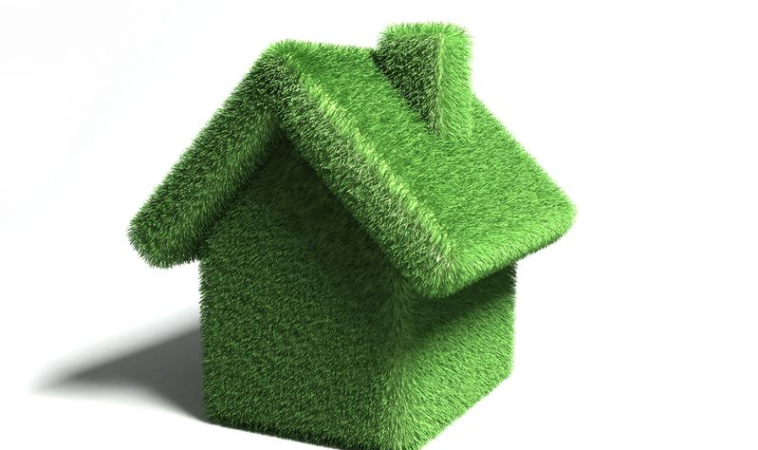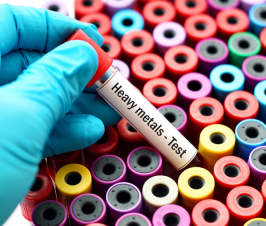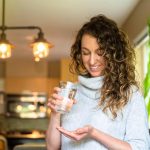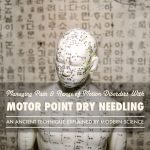Node Smith, ND
Looking for Ways to Greenmodel Your Home?
The Environmental Working Group (EWG) posted a great resource this week on choosing green building materials when remodeling your home. Building supplies are often sources of toxins which can be found in woods as a preservative, solvents, glues and paint; formaldehyde is found in particle board, which is a very common building material. But flooring, plumbing, insulation, and drywall all can contain toxic elements that can contaminate the air of your home.
Here are some areas and specific types of products to keep in mind:
Drywall
Drywall and joint compound often contain mercury and sulfur, which aside from causing trouble breathing, and headaches, actually corrodes wiring and appliances. Make sure to use drywall that is NOT made from synthetic gypsum – the process involves using coal waste which can be contaminated with mercury. Drywall produced after 2016 in the U.S.A. should be compliant with low sulfur standards. Also, there are low-VOC (volatile organic compounds), biocide, formaldehyde and acetaldehyde-free joint compound options available.
Flooring
The healthiest flooring options are solid surfaces of organic non-treated substances. Steer clear of carpet, laminate or vinyl flooring, or any layered wood that uses glues to fuse the layers of wood together. Use FSC-certified wood; or recycled or reclaimed wood with water-based Green Seal-11 certified finish; natural linoleum, or ceramic/glass/porcelain – all these options are clean. When installing floors, opt for using nail down, or click/interlocking installation rather than glues and adhesives.
Insulation
Insulation often contains chemical flame retardants, formaldehyde, and VOCs (spray foam insulation). The EWG recommends using Greenguard-certified insulation with low VOCs and containing no flame retardants – examples are mineral wool, perlite, cellular glass, or cork board.
Carpet
Carpet is generally not considered very clean. It almost always has flame retardants, and is made of synthetics like nylon and polypropylene. The backing of carpet is treated with chemical waterproofing and glues. If you must put a carpet down, wool carpet or Green Label Plus are cleaner options.
Caulks, Sealants and Adhesives
Most caulks, sealants and adhesives are made from solvents that off-gas VOCs or contain formaldehyde, BPA, or phthalates. Look for products that are Greenguard Gold certified, and have a low-VOC concentration (no more than 50 grams per liter for interior use). Water-based latex caulks and sealants are less toxic. For exterior use, or wet and damp areas, use solvent free silicone caulk and polyether-based sealant for exterior use. Avoid products with added biocides (for mold and mildew), and caulks and sealants with mineral spirits, petroleum derivatives, ethylene glycol, MEK, toluene, xylene, and acetone in high amounts.
Plumbing and Pipes
The most common replacements for lead pipes, PVC and PEX piping may pose health risks. Copper piping is probably the cleanest alternative, but is quite expensive. Polypropylene pipes, are less expensive and are less likely to leach chemicals than other plastic. Use a joint compound that has less than 0.20% lead.
Wood
Most pressure treated wood contains arsenic and copper chemicals as preservatives and insecticides. The EWG recommends finding naturally rot-resistant wood that is FSC-certified. Heat treated wood does not contain the same preservatives of other woods.
Paint
Paint, stains and finishes are toxic, and finding the least toxic option is certainly important. Again, find products that are Green Seal-11 certified.
Image Copyright: <a href=’https://www.123rf.com/profile_cornelius30′>cornelius30 / 123RF Stock Photo</a>
 Node Smith, ND, is a naturopathic physician in Portland, OR and associate editor for NDNR. He has been instrumental in maintaining a firm connection to the philosophy and heritage of naturopathic medicine among the next generation of docs. He helped found the first multi-generational experiential retreat, which brings elders, alumni, and students together for a weekend camp-out where naturopathic medicine and medical philosophy are experienced in nature. Four years ago he helped found the non-profit, Association for Naturopathic ReVitalization (ANR), for which he serves as the board chairman. ANR has a mission to inspire health practitioners to embody the naturopathic principles through experiential education. Node also has a firm belief that the next era of naturopathic medicine will see a resurgence of in-patient facilities which use fasting, earthing, hydrotherapy and homeopathy to bring people back from chronic diseases of modern living; he is involved in numerous conversations and projects to bring about this vision.
Node Smith, ND, is a naturopathic physician in Portland, OR and associate editor for NDNR. He has been instrumental in maintaining a firm connection to the philosophy and heritage of naturopathic medicine among the next generation of docs. He helped found the first multi-generational experiential retreat, which brings elders, alumni, and students together for a weekend camp-out where naturopathic medicine and medical philosophy are experienced in nature. Four years ago he helped found the non-profit, Association for Naturopathic ReVitalization (ANR), for which he serves as the board chairman. ANR has a mission to inspire health practitioners to embody the naturopathic principles through experiential education. Node also has a firm belief that the next era of naturopathic medicine will see a resurgence of in-patient facilities which use fasting, earthing, hydrotherapy and homeopathy to bring people back from chronic diseases of modern living; he is involved in numerous conversations and projects to bring about this vision.

















